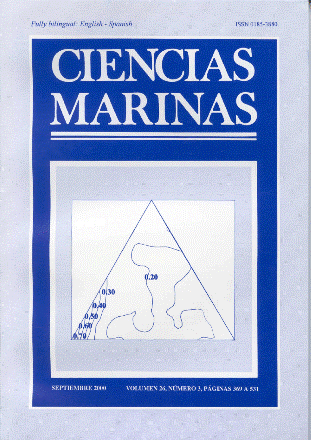Analysis of the fishing strategies of the yellowfin tuna (Thunnus Albacares) Eastern Pacific Fishery Based on Monte Carlo simulations of a density-dependent matrix model
Main Article Content
Abstract
The effect of the fishing effort on the age structure has not been considered in many models. To consider both uncertainty and age structure, a density-dependent matrix model based on a discrete time-form of the logistic equation using the Leslie matrix was employed, with Monte Carlo simulations. A total of 66 different fishing scenarios were structured for the yellowfin tuna (Thunnus albacares) in the eastern Pacific. The experimental design consisted of 400 ten-year runs for each of the 66 fishing scenarios, considering each age-class. The uncertainty was considered for natural mortality, environmental carrying capacity, total number of sets, catch per set of each type (on dolphins, schools and logs), and recruitment. The age structure had the greatest relative importance in the model, according to sensitivity analysis. One way of controlling the age structure is directing the fishing effort towards the three types of fishing sets. The fishing strategies that presented the highest success probability values (percentage of iterations above arbitrary levels) were those with dominance of dolphin-sets, a small amount of school-sets and almost no log-sets. The best fishing strategies obtain high success probabilities for the especially susceptible age-classes and total biomass. These fishing strategies assure higher total catches, minimum juvenile tuna discards and lower incidental catches. The model predicts a 32% difference in the catches between non-dolphin-sets and dolphin-sets.
Downloads
Article Details
This is an open access article distributed under a Creative Commons Attribution 4.0 License, which allows you to share and adapt the work, as long as you give appropriate credit to the original author(s) and the source, provide a link to the Creative Commons license, and indicate if changes were made. Figures, tables and other elements in the article are included in the article’s CC BY 4.0 license, unless otherwise indicated. The journal title is protected by copyrights and not subject to this license. Full license deed can be viewed here.

